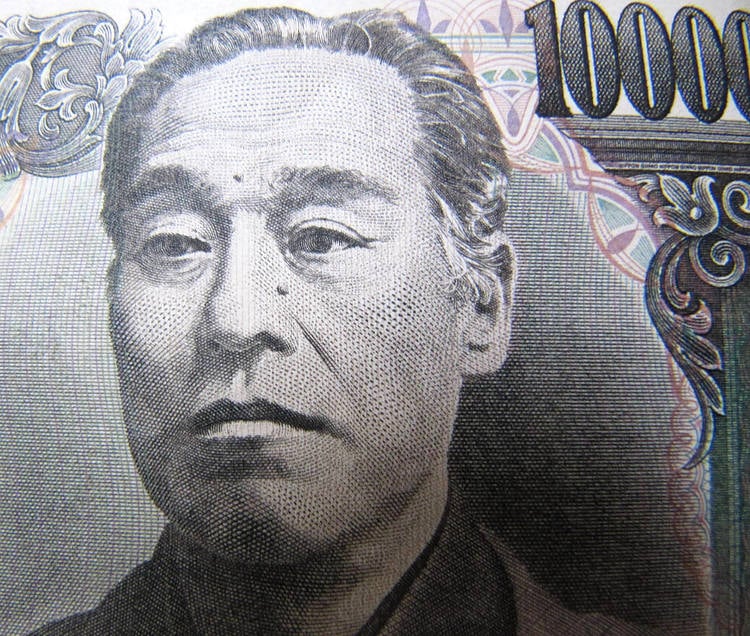Share:
The Japanese Yen reached a two-and-a-half-month high against the US Dollar on Wednesday. Dovish Fed expectations pushed US bond yields lower, leading to a weaker Greenback. The increasing likelihood of a policy shift by the Bank of Japan (BoJ) supported the JPY and put pressure on USD/JPY. The JPY continued to benefit from USD selling bias, with the USD/JPY pair dropping below the 147.00 mark for the first time since September 14. The underlying inflation in the United States showed signs of slowing in October, reinforcing the market view that the Federal Reserve was likely done raising interest rates. Dovish remarks from some Fed officials on Tuesday boosted rate cut bets and triggered a fresh leg down in US Treasury bond yields, driving the USD to a 3-1/2-month low. The JPY, on the other hand, was underpinned by strengthening expectations that the end of the BoJ’s negative interest rate policy is approaching. This is seen as another factor contributing to the USD/JPY pair’s downfall for the fourth successive day. A positive risk tone, which tends to dent demand for safe-haven assets, including the JPY, could lend some support and help limit losses.
Daily Digest Market Movers:
Japanese Yen remains supported by weaker USD and hawkish BoJ expectations. Federal Reserve Governor Michelle Bowman said on Tuesday that she remains willing to support raising interest rates should the incoming data indicate that progress on inflation has stalled. New York Fed President John Williams said that longer-term inflation expectations have been encouragingly steady, but did not make any forward-looking comments about monetary policy. Fed Governor Christopher Waller said that there are good economic arguments that if inflation continues to decline for several more months, it is possible to lower the policy rate. Waller added that he was increasingly confident that policy is currently well positioned to slow the economy and get inflation back to the central bank’s 2% target. The dovish remarks reaffirm the market view that the Fed is done with its policy-tightening campaign and may begin cutting interest rates in the middle of 2024. On the economic data front, the Conference Board’s US Consumer Confidence Index rose to 102 in November from the previous month’s downwardly revised reading of 99.1. Consumers’ 12-month inflation expectations fell to 5.7% from 5.9% in October, in contrast to the University of Michigan’s survey last week that long-term inflation expectations rose in November to levels last seen in 2011. The Bank of Japan will almost certainly end its negative interest rate policy by early next year in the wake of persistently high inflationary pressures.
Technical Analysis:
USD/JPY seems vulnerable to slide further, with the 100-day Simple Moving Average (SMA) support breakdown in play. A break below the 100-day SMA pivotal support near the 147.00 mark could be seen as a fresh trigger for bearish traders. Oscillators on the daily chart have been gaining negative traction, suggesting that the path of least resistance for the USD/JPY pair is to the downside. A subsequent fall towards the 146.50-146.40 intermediate support, en route to the 146.00 round figure, looks like a distinct possibility. On the flip side, any recovery attempt now seems to confront stiff resistance and remain capped near the 147.30-147.35 barrier.
Japanese Yen Price Today:
The table below shows the percentage change of Japanese Yen (JPY) against listed major currencies today. Japanese Yen was the strongest against the Australian Dollar.
Japanese Yen FAQs:
The Japanese Yen (JPY) is one of the world’s most traded currencies. Its value is broadly determined by the performance of the Japanese economy, but more specifically by the Bank of Japan’s policy, the differential between Japanese and US bond yields, or risk sentiment among traders, among other factors. The current BoJ ultra-loose monetary policy, based on massive stimulus to the economy, has caused the Yen to depreciate against its main currency peers.
The BoJ’s stance of sticking to ultra-loose monetary policy has led to a widening policy divergence with other central banks, particularly with the US Federal Reserve. This supports a widening of the differential between the 10-year US and Japanese bonds, which favors the US Dollar against the Japanese Yen. The Japanese Yen is often seen as a safe-haven investment. Turbulent times are likely to strengthen the Yen’s value against other currencies seen as more risky to invest in.
